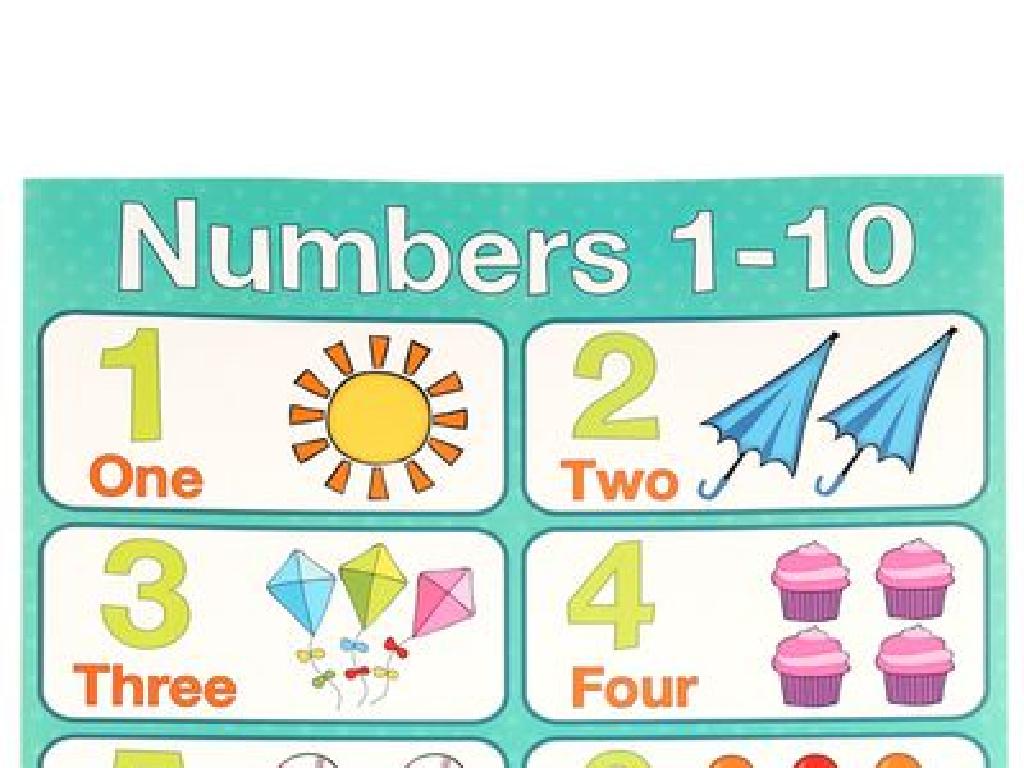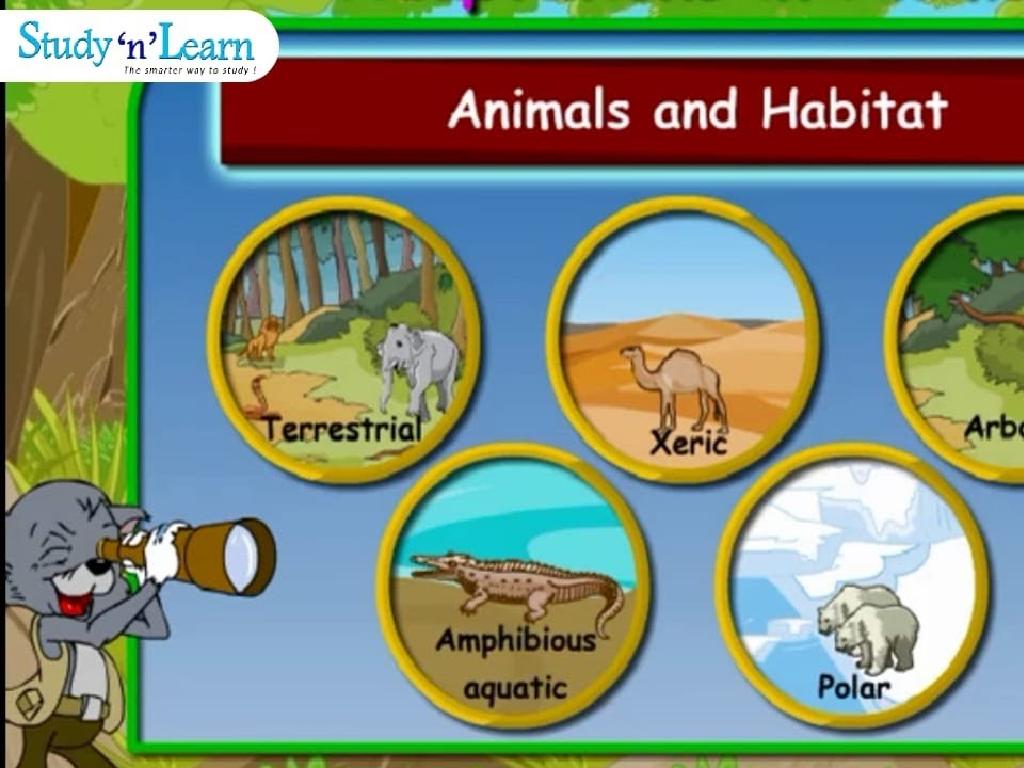Decompose Fractions Into Unit Fractions
Subject: Math
Grade: Fourth grade
Topic: Understand Fraction Addition And Subtraction
Please LOG IN to download the presentation. Access is available to registered users only.
View More Content
Welcome to Fractions!
– What are fractions?
– Breaking down fractions
– Splitting a whole into equal parts, like a pizza
– Importance of fractions
– Helps with math problems & understanding parts of a whole
– Fractions in daily life
– Used in cooking, time, and sharing things
|
This slide introduces the concept of fractions to fourth-grade students. Begin by explaining that a fraction represents a part of a whole. Emphasize the idea of breaking down fractions into smaller, equal parts, known as unit fractions. Discuss why fractions are important, not just in math class but also in real life, such as when dividing a pizza among friends, measuring ingredients for a recipe, or understanding the concept of half an hour. Encourage students to think of examples from their daily lives where they use fractions. This will help them see the relevance of what they’re learning and engage them in the lesson.
Understanding Fractions
– A fraction shows part of a whole
– Top number is the numerator
– It tells us how many parts we have
– Bottom number is the denominator
– It tells us into how many parts the whole is divided
– Example: 1/2 of a pizza
– If a pizza is cut into 2 pieces, 1/2 means we have one of those pieces
|
Begin the lesson by explaining that a fraction represents a part of a whole, like a slice of pizza. The numerator, the top number of the fraction, indicates how many parts we’re talking about, while the denominator, the bottom number, shows how many equal parts the whole is divided into. Use the pizza example to visually demonstrate this concept, as it’s relatable for fourth graders. Emphasize that understanding the numerator and denominator is crucial for learning how to decompose fractions into unit fractions in the following lessons.
Understanding Unit Fractions
– What is a unit fraction?
– A fraction with a numerator of 1
– Represents one equal part
– Examples: 1/3, 1/4, 1/5
– These fractions show 1 part out of 3, 4, or 5 total parts
– Building blocks of fractions
– All other fractions are made from unit fractions
|
This slide introduces the concept of unit fractions, which are the simplest form of fractions with a numerator of 1. It’s crucial for students to understand that a unit fraction represents one part of a whole that is divided into equal parts. Use examples like slicing a pizza or an apple to illustrate this point. Explain that every fraction is composed of unit fractions, making them the building blocks for understanding more complex fractions. Encourage students to think of other examples of unit fractions and how they might combine them to form other fractions.
Decomposing Fractions into Unit Fractions
– What does decompose mean?
– Decompose: break into smaller parts
– Break down fractions into unit fractions
– Unit fractions: fractions with 1 as the numerator
– Example: Decompose 3/4
– 3/4 = 1/4 + 1/4 + 1/4
– Unit fractions make the original
– Add unit fractions to get the whole
|
This slide introduces the concept of decomposing fractions for fourth graders. Begin by explaining that ‘decompose’ means to break down into smaller, more manageable parts. Emphasize that unit fractions are the building blocks of other fractions, with a numerator of 1. Use the example of 3/4 to show visually how it can be broken down into three parts of 1/4 each. Reinforce the idea that when these unit fractions are combined, they make up the original fraction. Encourage students to practice with different fractions, ensuring they understand that the denominator stays the same while the numerator represents the number of parts being added together.
Why Decompose Fractions?
– Understanding fractions deeply
– Aids in addition and subtraction
– Helps compare different fractions
– Solves real-world fraction problems
– For example, splitting a pizza into slices to share fairly.
|
Decomposing fractions into unit fractions is a fundamental skill in understanding how fractions work. It allows students to break down complex fractions into simpler, more manageable parts, which is especially helpful when performing operations like addition and subtraction. By decomposing fractions, students can also learn to compare fractions with different denominators more easily. Moreover, this skill is practical and can be applied to real-world scenarios, such as dividing a pizza among friends or measuring ingredients in a recipe. Encourage students to think of situations in their daily lives where they might need to decompose fractions.
Let’s Practice: Decomposing Fractions
– Example: Decompose 5/6 into unit fractions
– Break down 5/6 into 1/6 + 1/6 + 1/6 + 1/6 + 1/6
– Understand parts that make up 5/6
– 5/6 is made of 5 parts each 1/6
– Write 5/6 as a sum of unit fractions
– 5/6 = 1/6 + 1/6 + 1/6 + 1/6 + 1/6 shows decomposition
|
This slide is a class activity designed to help students practice decomposing fractions into unit fractions. Start with the example of decomposing 5/6. Guide students to visualize the fraction as a whole divided into six parts, with five parts shaded. Explain that each part is a unit fraction, in this case, 1/6. Have students write 5/6 as a sum of five unit fractions, each being 1/6. This exercise will reinforce their understanding of fractions as composed of unit fractions and prepare them for adding and subtracting fractions. Provide additional examples if time allows and encourage students to create their own examples.
Class Activity: Fraction Art
– Create a fraction art piece
– Use colored paper for fractions
– Decompose colors into unit fractions
– Break down each color’s area into pieces that represent one part of the whole.
– Share and explain your art
|
In this engaging class activity, students will create art using colored paper to visually represent different fractions. Each student will choose colors and cut them into pieces that represent fractions of the whole art piece. They will then decompose these fractions into unit fractions to demonstrate their understanding of how larger fractions are made up of smaller, unit fractions. For example, if half of the art is blue, they could show this as 1/2 or two 1/4 pieces of blue paper. After completing their art, students will present their work to the class, explaining the fractions they used and how they decomposed them. This activity will help solidify the concept of fractions and unit fractions in a tangible and creative way. Possible variations of the activity could include using different shapes, creating a collage, or even a group mural where each student contributes a piece representing a fraction.
Wrapping Up: Decomposing Fractions
– Congratulations on learning decomposition!
– Fractions represent parts of a whole
– Homework: Decompose 7/8, 4/5, 3/10
– Break down each fraction into unit fractions
– Be ready to discuss your answers
– Think about what each unit fraction represents
|
Great work today, class! You’ve learned how to break down fractions into smaller ‘unit fractions,’ which are fractions with a numerator of 1. Remember that every fraction is just a way to show parts of a whole thing. For your homework, practice decomposing the fractions 7/8, 4/5, and 3/10 into unit fractions. For example, 7/8 can be decomposed into 1/8 + 1/8 + 1/8 + 1/8 + 1/8 + 1/8 + 1/8. This will help reinforce your understanding of fractions and prepare you for our next lesson on adding and subtracting them. Be prepared to share how you decomposed each fraction and what challenges you faced, if any.





